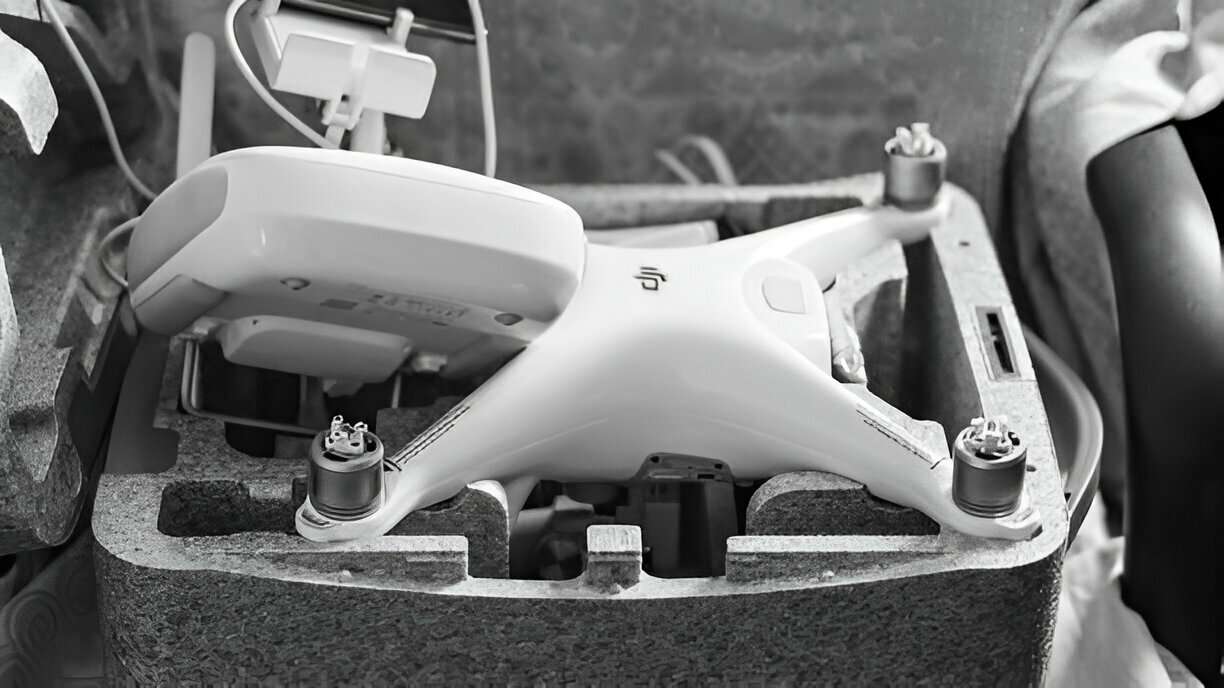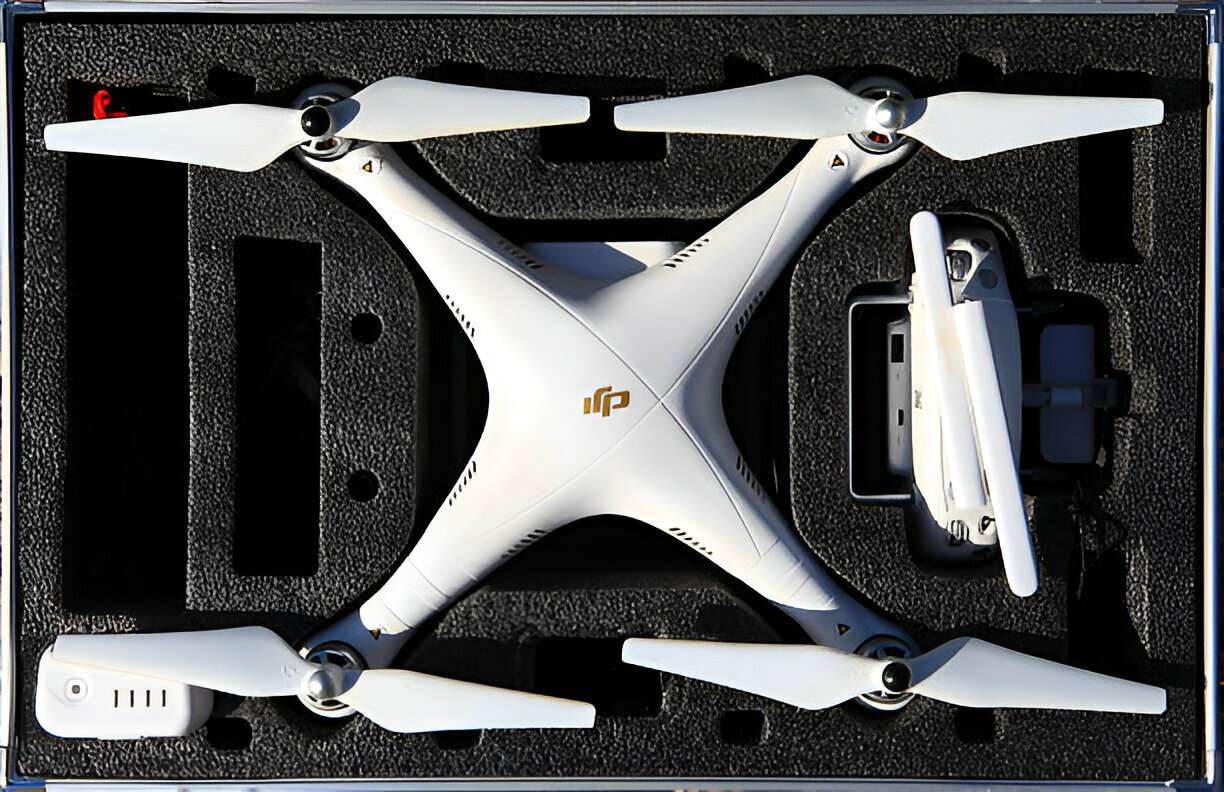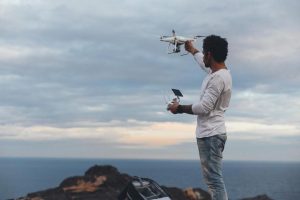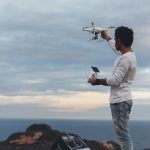Most of the technical problems I have experienced in the field could have been prevented with better preflight preparations the night before. Sometimes the smallest detail can have a domino effect, creating show-stopping difficulties if your flight planning is poor.
Night-before procedures
Remember to charge all required battery systems. These include not only the ample number of primary Phantom removal batteries, but also the rechargeable Wi-Fi range extender, remote controller, and the iPad. My rule of thumb for charging primary batteries is to charge one for every ten minutes of estimated flight time plus a backup.
With that formula for a medium project requiring three sorties each running 10–12 minutes, I would charge four batteries. On full weeks where I have daily flights, I would charge all my primary batteries and sequence through them during the following couple of days. That way I have ample charged cells ready to go, but none set for too many days risking the cook and swelling problem.
[amazon box=”B07JDVVCQ6″]
I purchased a serial charger for the Phantom’s batteries that would charge four over two hours, one at a time. With that style, I did not have to remember to swap them on and off the charger three to five times. It would be great to find a charger that can simultaneously charge four or more batteries at once, but I have yet to find one.
The older Phantom 2 remote controllers lacked the internal rechargeable battery and instead had four replaceable AA batteries. I keep the high-end lithium batteries in the controller with another spare set of four still in the package, stored in my flight case. Before each flight, I top off the extended Wi-Fi unit and the iPad, even though it usually takes two to three flights to get below 50 percent power. To be safe, I keep a 12V DC to 120 AC converter in the car with extra charging cables.
Those handy accessories enable me to recharge batteries on the road, in between flight sites. Make sure you have enough space on your Micro SD card for the next day’s flight. A good practice is to always download your videos and images to your dedicated video editing workstation immediately after returning home from a flight. Since your workstation should also be configured to perform backups that night, you can delete the last mission files from the Micro SD card, keeping the UAV’s storage free and ready for the next photography project.
Secure flight case items
After all, batteries are charged, the night before the flight, I pack everything I need into the flight case and verify the camera/gimbal lock is in place. That little plastic lock is important to put into place every time the drone is shut down since it keeps the camera from swinging around on the loose gimbal. The camera system is shot if anything happens to the tiny, vulnerable ribbon cable.
The lens cap that comes with the Phantom 2 Vision Plus is very tight-fitting, and I have nearly broken the gimbal by taking the cap off far too many times. I felt the risk of using it and possibly damaging the assembly was greater than the protection it provided, so I stopped using the cap. Since I constantly keep my Phantoms in cases when not in use, I have had no problems with dirty lenses.
Tie down your loose spare props, batteries, and charging cables, so nothing moves around during your travels. When the case is shut, and you move it around, there should be no sounds of items shifting around inside. Use extra foam, rubber bands, or Velcro strips to lock down stuff inside your case.
Place the flight case by the door that night (or in your locked vehicle that is parked in your locked garage), so the next morning all you have to do is check the weather and grab it as you head out to the flight site. If you have a sedan, use the trunk for security and a truck or SUV, use a blanket to cover the case. It would be unfortunate for some car burglar to break into your vehicle and get your complete aerial infrastructure.
[amazon box=”B01LALWBLS”]
Onsite Setup
Upon arrival at the flight site, get familiar with your surroundings and compare them to what you prepped while viewing Google Earth the night before, to find anything new that may risk your UAV or change the flight plan.
If the weather looks good and the area is secure for your aerial mission, then place the flight case in a good takeoff area, remove the camera/gimbal lock, and power up the drone, Wi-Fi extender, and RC controller. Get your shaded flight deck assembled with the iPad and controller in place while the UAV is finding satellites for GPS location and navigation.
After the Phantom locks onto at least seven satellites and sets “Home Point” giving you the green light and “Ready to Fly” status on your DJI Vision app, it’s time to download the background map.
Swipe your finger on the iPad within the Vision app to the mini-Ground Station display and wait for the satellite picture to load. If your iPad does not have cellular, then connect Wi-Fi to your iPhone or local Wi-Fi connection to download it.
I strongly recommend against flying any new area you are not familiar with or even a large area you are local to without having a good Ground Station satellite map of where you are and where the bird is. The map background will help you be a better navigator and make quick decisions in the air for photography shots and camera angles.
The most important reason to have an accurate map background is that if you do have rapid power loss and the bird goes down. You will have a mark on the map where it went down so you can retrieve it successfully. Trust me on this one; it saved my bird one time.
Pack-up and -out Procedure
Hopefully, you had a great flight with stable air and good light and captured ample video and stills for your client. Now it is time to shut down the UAV and get packed to head to your home office. Before you power down, make sure all video had been stopped so the last stream will sync to the Micro SD card. Then power down the Phantom, the controller, the Wi-Fi extender, and the iPad.

It is easy to get into a hurry upon exiting the site and leave the controller or extender still turned on and drain the batteries. Take the time to put the camera/gimbal lock back in place before placing the Phantom in the flight case. Then store everything else in the case in the reverse order you took it all out to make sure you forget nothing.
As soon as you arrive at your home office, immediately download your day’s work to your workstation, so the project does not exist solely on a single media source. It would really be a bummer if you spent two hours filming in clean air at sunset getting awesome video to let it sit on the Micro SD card for a week.
Then, as media cards sometimes do, the card went bad over those few days, and now you cannot retrieve the aerial video and images. Leaving it to later to download becomes troublesome when dates and times get confused, and you end up overwriting video, deleting files, or even formatting the Micro SD card during the following flight after forgetting to download the previous flight’s data.









purchase neurontin no rx needed buy neurontin overnight Usa delivery neurontin overnight no script gabapentin no prescription cheap generic neurontin online get bonuses for all orders buy online neurontin without prescription buy prescription drugs online. buy cheap online gabapentin side effects of taking neurontin cheap neurontin Us delivering neurontin on lin neurontin overnight no prescription required affordable prices